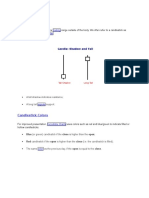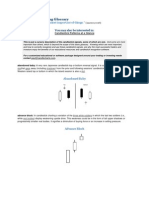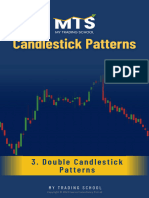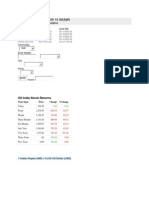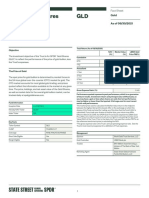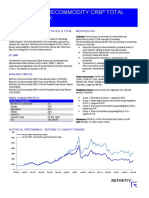0% found this document useful (0 votes)
305 views20 pagesJapanese Candlestick Patterns Guide
The document provides a guide to common Japanese candlestick patterns used for technical analysis of financial markets. It defines over 20 candlestick patterns categorized as bullish or bearish reversal patterns or continuation patterns. Basic patterns like Doji and spinning tops indicate indecision in the market. Bullish reversal patterns signal potential trend changes from bearish to bullish markets, like the hammer, inverse hammer, bullish engulfing, and piercing line formations. Confirmation of patterns is recommended before making trading decisions.
Uploaded by
joan wanjikuCopyright
© © All Rights Reserved
We take content rights seriously. If you suspect this is your content, claim it here.
Available Formats
Download as DOCX, PDF, TXT or read online on Scribd
0% found this document useful (0 votes)
305 views20 pagesJapanese Candlestick Patterns Guide
The document provides a guide to common Japanese candlestick patterns used for technical analysis of financial markets. It defines over 20 candlestick patterns categorized as bullish or bearish reversal patterns or continuation patterns. Basic patterns like Doji and spinning tops indicate indecision in the market. Bullish reversal patterns signal potential trend changes from bearish to bullish markets, like the hammer, inverse hammer, bullish engulfing, and piercing line formations. Confirmation of patterns is recommended before making trading decisions.
Uploaded by
joan wanjikuCopyright
© © All Rights Reserved
We take content rights seriously. If you suspect this is your content, claim it here.
Available Formats
Download as DOCX, PDF, TXT or read online on Scribd
/ 20













